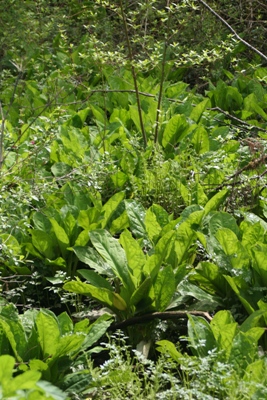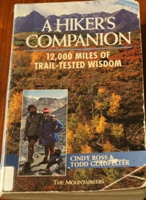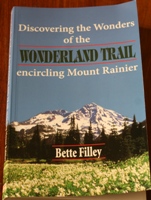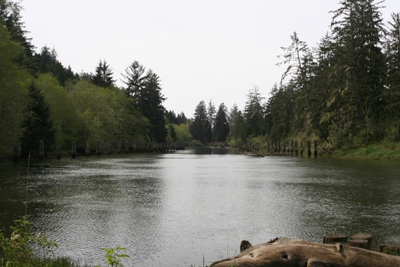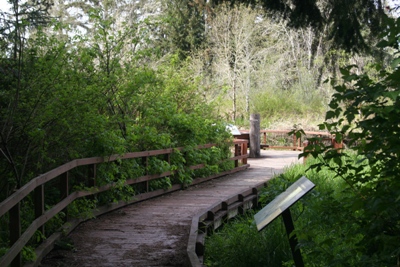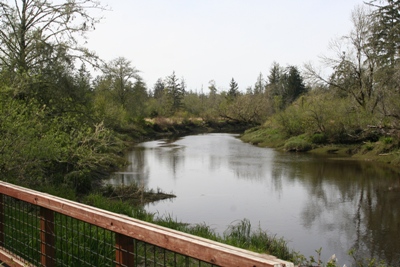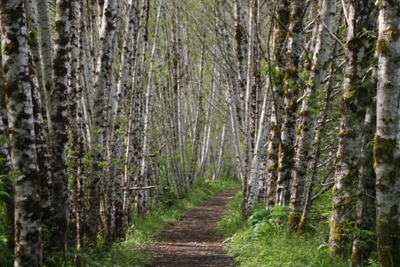Hiking
From harborpedia
Contents |
Hiking in the Grays Harbor area
Grays Harbor Washington is a coastal estuary. It has a surface area of 60,000 acres which has been heavily developed. There are three cities within the area: Aberdeen, Hoquiam, and Cosmopolis. These cites were once the largest providers of forest products in the country. [1]
Grays Harbor is one of the most important staging areas on the entire Pacific Coast for shorebirds. There is the largest concentration of sandpipers, dulins, and dowitchers south of Alaska which can be seen while hiking here. [1]
Recommended reading
Preparing for a trip is half the fun!
There are many books available to help you one your way, even before you step foot on the trail. Why learn hard won lessons when someone has already written a book about it?!
Suggested readings are:
A Hiker’s Companion; 12,000 Miles of Trail-tested Wisdom
By Cindy Ross and Todd Gladfelter. The Mountaineers publishers. This book covers everything, from food, family, personal hiking styles, to weather, water and first aid. Note: the section on gear is outdated at this point.
Discovering the Wonders of the Wonderland Trail; encircling Mount Rainier
By Bette Filley. Dunamis House publishing. This book is dedicated to the approximately 100 mile trail on the slops of Mt. Rainier. It covers preparing, gear, weather, first aid, and specific trail logs for the trail.
Things to consider when planning a hiking trip
Each of these subjects will change the trips experience:
• Scenery
• Solitude
• Difficulty
• Mileage
• Elevation Gain
• Days
• Shuttle Mileage
• Map
• Season
• Permits and Rules
Whatever you preference or needs are, there will be a hike to meet them. Most all guide or travel books will note these subjects when describing a trail or hike. [2]
Most national forests in Washington State require trailhead passes. The fees for these passes are used to pay for trail maintenance, park ranger’s salary, and trail improvements.
When driving on Washington’s back roads, keep an eye out for logging trucks.
Deer and Elk hunting seasons in Washington are approximately the second week in October to the end of November. If planning a trip in the backcountry during this time wear a bright red or orange cap, vest, pack and/or other obvious clothing.
Be prepared for lots of rain. Hypothermia is no joke.
[2]
Leave no trace
Leave no trace is a common term which references what is considered by many to be proper hiking etiquette when hiking in wilderness areas. It refers to guidelines which promote preservation of the wilderness. [2]
The leave no trace practice ensures that as little as possible harm is done to the natural world that hikers have come to enjoy. The guidelines are as follows:
• Leave no litter behind; pack out what you brought in. and, pick up litter you see along the trail.
• Do minor trail care as you hike: remove rocks, tree limbs and debris which could act as a dam in future rains. This will reduce erosion.
• Report major washouts to trail maintenance crews, so that the limited an=mount of funding can be concentrated to the most needed areas.
• Always camp in designated areas.
• Never camp on fragile meadow vegetation or besides a lake or stream.
• Never feed wildlife, and encourage others to do the same.
• Do not build wild campfires in the backcountry. Fires are very damaging to the land.
• Leave pets at home when going into the backcountry.
[2]
Day Trips in, or around, Grays Harbor
For the times when you are looking for lighter planning, trekking, and commitment, but still want to hike there are day trips. Author Craig Romano has dedicated an entire book to day hiking around the Olympic peninsula. Within the pages of his book there is information on the following trails found in or around the Grays Harbor area: Lake Sylvia State Park, Chehalis River Sloughs, Johns River State Wildlife Area, and Damon Point State Park. [1]
Lake Sylvia State Park: this park actually has two 2 mile loops within a 237 acre state park. This used to be a logging camp and was turned into a park in 1936. It is located close to down town Montesano. Along with the two tails, there are picnic areas, easy access to the water for small boat launching and fishing, and swimming areas. For information on the park contact Lake Sylvia State Park 360.249.3621, http://www.infocent@parks.wa.gov[1] [1]
Chehalis River Sloughs: is a seven mile roundtrip trial (3.5 miles on way) and open all year long. There is a lot of wildlife, numerous viewing platforms, and interpretive plaques along the entire trail. No dogs permitted. For information on the park contact Department of Natural Resources, Pacific cascade Region 360.577.2025 http://www.pacific-cascade-region@wadnr.gov [2][1] Photos of the Chehalis River Slough taken April 2010:
Johns River State Wildlife Area: is a very easy 2.5 mile trail though the 1500-acre wildlife area. It is open year-round. Hikers can see many resident birds and Elk while walking along the trail. The first half of the trail is wheelchair accessible. For more information contact Washington department of Fish and Wildlife, Region 6 Office 360.249.4628 http://wdfw.wa.gov/reg/region6.htm[3][1]
Copalis River Spit: is a vehicle free beach trail with a lot of coast bird life around. This trail is 4 miles long and close to downtown Ocean Shores. It is open year round. This trail enters a 365 –acre state park. For more information contact Griffiths-Priday State Park 360.289.3553 http://www.infocent@parks.wa.gov[4] [1]
Sandpiper Trail at the Grays Harbor National Wildlife Refuge is a great place to view the natural beauty of the Grays Harbor.
Longer trips in the area
If looking for a longer hike, there are many in the area.
North Olympic Coast: this is a 24 mile trail which takes 3-4 days to complete. A shuttle is necessary as it is not a loop. There is an abundance of wildlife and coastal scenery as you make your way up the coast line. The trail is open all year, and the best times to hike it are considered to be April though November. Permits required. Contact Olympic National Park, Wilderness Information Center for more information 360.565.3100 http://www.nps.gov/olym/wic.htm[5] [2]
South Olympic Coast: this is an 18 mile trail which takes 2-4 days to complete. A shuttle and permit are required. It is also open year round. See contact information for the North Olympic Coast trail for more information. [2]
High Divide – Hoh River Traverse: this is a 45- 51 mile trail which takes 4-7 days to complete. Shuttle is needed. The trail is open from August through October. Permits are required. This trail goes through rainforest; one can expect wildlife, forest, wildflowers, views, and glaciers. And rain. For information contact Olympic National Park, Wilderness Information Center 360.565.3100 http://www.nps.gov/olym/wic.htm[6][2]
Winter Hiking
It is important to remember that people differ greatly in their ability to tolerate cold; this ability is affected by the individual’s physical condition, age and genetic disposition. Successful - and that means safe above all- winter hiking and camping depends on the full appreciation of winter problems and conditions. Things to remember are: • The human body – the core temperature of the human body must be maintained. Limbs are particularly vulnerable to frost bite. And food becomes evermore important in the climates as a source of energy, and body heat.
• Travel and clothing – travel is slower in winter snow and ice. And clothing must be insulated and made of proper materials.
• The terrain: many familiar landscape markers will be buried by winter snow. Maps, compasses, and familiarity with the area are a necessity.
• The weather: prepare for sever and unpredictable weather. [3]
Reference
1) Romano, Craig. Day Hiking Olympic Penninsula. Seattle: The Mountaineers Books, 2007. 64-72. Print.
2) Lorain, Douglas. Backpacking Washington; from Volcanic Peaks to Rainforest Valleys. 2nd ed. Berkeley: Wilderness Press, 2007. 1-71. Print.
3) Danielsen, John A. Winter hiking and camping. New York: Adirondack Mountain Clun Inc., 1972. Print.
